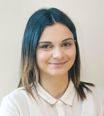Social Media, Selfies and Self-Esteem: 4 questions to ask your teen and helpful messages to discuss13/5/2024
How can you support your teen’s development in the age of social media? Self-esteem development during adolescence is an important area of focus for psychology. Self-esteem refers to the judgements young people make about their worth as a person and is closely associated with mental well-being. The way that we are communicating with peers has changed dramatically over the past decade with the growth of social media platforms such as Facebook and Instagram. Although social media has made communication and keeping up with peers easier, it has brought about an added pressure to adolescent’s self-esteem development. It has never been easier to compare yourself to peers than it is right now. On social media, your life is on show and young people are able to create a beautiful ‘highlights reel’ which is often unrealistic and highly filtered. This in turn feeds comparison to unachievable standards and can leave you feeling not good enough. Here are some conversation starters to have with your adolescents as well as some helpful messages that we need to be sending about social media. Sit down with your adolescent and ask them: “What does it feel like when your post doesn’t get many likes?” Helpful messages to discuss:
Look at Instafamous celebrities’ profiles with your child and ask, “What do you think about this person’s profile? What does their life look like to you?” Helpful messages to discuss:
“How do you feel when you compare your number of ‘friends’ to other people’s number of ‘friends’?”
"What inspires you on your social media feeds?"
Helping your teens to think about their motivations behind posting up that hundredth sexy selfie will help them (and you) to think about healthier ways of getting validation and building self-esteem. It’s probably not going to drastically change their posting behaviour, but it might help them to see their online behaviour through a new lens. Through having this conversation, you might be able to come up with ideas about other ways to feel confident – such as learning about their strengths and building on them. This is how positive self-esteem is developed. It might even help you to reflect on whether your child has enough opportunities to experience success and develop their strengths. If not, think about how you can facilitate this by increasing their opportunities in the ‘offline’ world. Remember, social media is a big part of your teens life so understanding more about it will help you to show your interest in your child’s life bringing you closer together which is so important for your relationship. If you have concerns about negative impacts that social media is having on your child’s self-esteem and you are unsure how to tackle this, speak with a psychologist skilled in this area. It’s almost inevitable to have an argument or disagreement with a friend or partner.
Here are some tips for healthy conflict resolution:
Book in with one of our psychologists for further support Alyce Galea, Psychologist It is essential that our young people learn how to manage the intensity of their emotions, and work through their emotions in a healthy and helpful way.
It is not something that that we are inherently born knowing how to do, so it is important that parents and/or caregivers help facilitate a safe space for children to learn emotion regulation. Here are 5 important tips to help you help your children: 1. Be warm, accepting and responsive to your child’s emotional needs
3. Accept, support and show empathy to validate their feelings
4. Be patient
5. Try not to ignore, dismiss, discourage, punish or react negatively to emotions, especially negative emotion
By being in touch with your own emotions and being mindful of how you manage them, you can be a role model for your children and help them feel safe to express their own emotions in a healthy and helpful way. For more parenting support or for support for your child, please contact the clinic to book an appointment. Alyce Galea. Psychologist The way we communicate with others tends to fall into one of four styles: Passive, Aggressive, Passive Aggressive and Assertive. We may often adopt the one communication style in all interactions, or we communicate with different styles depending on who we are speaking with.
Let's look at the main traits of each communication style... Passive: Passive communicators have a tendency to avoid expressing their feelings or opinions, and shy away from standing up for themselves and their rights. This is often due to a fear of conflict, low confidence or anxiety about how people will respond to them. Because they don’t feel comfortable expressing themselves, they will often harbour resentment and let emotions buildup until they reach breaking point. Following an emotional outburst, they may feel shame and guilt, and return to being passive again. Aggressive: Aggressive communicators sit at the other end of the spectrum. They are very confident in expressing themselves and getting what they want, regardless of how their actions affect others. They often issue commands, are bad listeners and often lack empathy for the feelings of others. Passive Aggressive: Passive Aggressive communicators appear passive on the surface, but often express subtle or indirect aggressions. They are often aware of their needs and emotional experiences, but struggle to express them in a helpful way. Instead of openly communicating what they need or how they feel, they may instead express their grievances or annoyances through giving someone the silent treatment, spreading rumours, or making sarcastic or unhelpful remarks. These communicators often feel powerless, stuck and resentful because they are unable to effectively express themselves. Assertive: Assertive communicators are able to express their needs and feelings in a healthy and helpful way. They are empathetic and aware of how their actions may impact on someone, and are able to negotiate ways of having their needs met, without being overbearing, rude or hurting others. Assertive communicators understand that they may not get what they want all of the time, but are willing to compromise if it means having some of their needs met. When communication breaks down, it’s often because the ways we communicate and the habits we’ve formed often get in the way. We might have good intentions and an idea of how we would like to express ourselves going into a conversation with our teens, but as emotions heighten and we find ourselves feeling frustrated or impatient, what we want to say and how we want to say it might come out wrong or get misunderstood, leading to further breakdowns in our communication with them. The good news is that with practice, we can improve the way we relate and communicate with others! For more personalised support around communication and relationships in your life, please book in with one of our friendly psychologists. Alyce Galea. Psychologist Talking with a highly emotional teenager can be tough! When our emotions are heightened, our ability to access and use the thinking part of our brain can become really difficult, and it can be almost impossible for us to use rational thought.
Here are some tips on how best to communicate with your teen when they are in an emotional state: 1. Remain calm and check in with yourself. There is very little benefit to trying to communicate with your teen when they are in a heightened state, and the same goes for when you are experiencing big emotions.The most helpful thing you can do in this situation is to check in with yourself and try to remain calm as best you can. If your teens can sense your calm, they are more likely to calm themselves and be in a better position to effectively communicate with you. There is a scientific principle called neuroception that helps us understand this - when we are in the presence of a calm person, our brain picks up on those calming signals and our brain understands that we are safe. Being safe leads to feelings of calm. 2. Be present. Although your teen may not want to have a conversation with you, it’s important that they know that you are there for them and available to talk when they are ready. That gesture alone might be enough for them to trust that you are open and willing to hear them out. 3. Take a strengths based, non judgemental approach. Although you might not agree with how your teens behave, or how they should feel in a response to a certain situation, it’s helpful to provide a safe, non judgemental space for them to vent and talk it out. 4. Offer to listen and comfort, rather than “fix” things. Your job is not to fix things, per se, but to coach your children, offer the support they need and encourage them to practice skills of emotion regulation and problem solving, until they find what works for them. The way we problem solve and deal with our emotions, may not be particularly helpful for our teens. It’s important to remember that when we come to the solution for a problem ourselves, often with support from another person, we’re more likely to be able to make sense of the problem solutions and put them into practice - rather than when somebody imposes their solutions on us. 5. Expect rejection and avoid feeling disheartened. Adjust your expectations about how the conversations might go, so that you can avoid feeling disheartened or taking things personally. Your teen might test you a little until they can trust that you genuinely care and want to help them. It may take some time and persistence to reconnect with your teen, don’t be put off. If you’re willing to make the changes to better communicate with them, they will come through. I hope this has given you some helpful tips to be able to alter the way you communicate with your teens to build a stronger connection with them. Contact the clinic if you are in need of parenting support or support for your teen Alyce Galea. Psychologist The way we communicate with others tends to fall into one of four styles: Passive, Aggressive, Passive Aggressive and Assertive. We may often adopt the one communication style in all interactions, or we communicate with different styles depending on who we are speaking with.
Let's look at the main traits of each communication style... Passive: Passive communicators have a tendency to avoid expressing their feelings or opinions, and shy away from standing up for themselves and their rights. This is often due to a fear of conflict, low confidence or anxiety about how people will respond to them. Because they don’t feel comfortable expressing themselves, they will often harbour resentment and let emotions buildup until they reach breaking point. Following an emotional outburst, they may feel shame and guilt, and return to being passive again. Aggressive: Aggressive communicators sit at the other end of the spectrum. They are very confident in expressing themselves and getting what they want, regardless of how their actions affect others. They often issue commands, are bad listeners and often lack empathy for the feelings of others. Passive Aggressive: Passive Aggressive communicators appear passive on the surface, but often express subtle or indirect aggressions. They are often aware of their needs and emotional experiences, but struggle to express them in a helpful way. Instead of openly communicating what they need or how they feel, they may instead express their grievances or annoyances through giving someone the silent treatment, spreading rumours, or making sarcastic or unhelpful remarks. These communicators often feel powerless, stuck and resentful because they are unable to effectively express themselves. Assertive: Assertive communicators are able to express their needs and feelings in a healthy and helpful way. They are empathetic and aware of how their actions may impact on someone, and are able to negotiate ways of having their needs met, without being overbearing, rude or hurting others. Assertive communicators understand that they may not get what they want all of the time, but are willing to compromise if it means having some of their needs met. When communication breaks down, it’s often because the ways we communicate and the habits we’ve formed often get in the way. We might have good intentions and an idea of how we would like to express ourselves going into a conversation with our teens, but as emotions heighten and we find ourselves feeling frustrated or impatient, what we want to say and how we want to say it might come out wrong or get misunderstood, leading to further breakdowns in our communication with them. The good news is that with practice, we can improve the way we relate and communicate with others! For more personalised support around communication and relationships in your life, please book in with one of our friendly psychologists. Hillary Sanders, Psychologist If you’re considering taking your child to see a therapist, it pays to prepare them. Here are 10 useful pointers to consider: 1. Involve them The important point to raise here is to actually ensure that your child is aware of their session, prior to attending. A common mistake parents make is not telling their child, or telling them at the last minute (such as when driving to the appointment). This is often with the best of intentions, as parents hope to reduce any undue worry or resistance about attending, however it is often counterproductive. Like all of us, unfamiliar situations can trigger worried thoughts. If your child has no idea what the appointment is about, or what a therapist does, their brains will attempt to make sense of it, which often results in negatively distorted beliefs or assumptions. For example, your child may see a therapist in the same way as an authority figure, like a teacher, and believe that they are getting into trouble because they are "bad". Or they may see a therapist more like a doctor, and worry they will be subjected to medical tests, given medication or a needle. As you can see, it’s important to ensure that your child knows what the appointment is about and what a therapist does, to avoid any misconceptions. We want to ensure they have a positive experience of help- seeking; if their first experience of help-seeking is one fraught with confusion, anxiety, and negative beliefs, then you may encounter resistance to them attending further sessions. 2. Use simple explanations To explain the role of the therapist, keep it clear and simple. Introduce the role of a therapist as someone who can help people of all ages with things like big feelings or difficulties at home or at school. Explain that the therapist helps people find ways to cope with these feelings or difficulties, as well as helping them to feel better within themselves and within their relationships (i.e. friends, home, school). For children, point out that they will have fun with the therapist too! They will get a chance to play and be creative. 3. Gently touch on the difficulties Add what you have noticed they are struggling with. For example, you might have noticed they are avoiding school, or perhaps they are finding it hard to manage anger at home. Gently mention what your concern is, but ensure the conversation is not a disciplinary one, meaning that you do not demonise their behaviour or send the message that "something is wrong with you", which places the weight of the issues on them. Phrase your concerns as "difficulties". For example, "I have noticed you're having difficulty with (state the challenge) at the moment, and a therapist can help us with this". 4. Normalise Every human being experiences emotional, behavioural, and social difficulties throughout their life. Normalise your child's struggle as part of being human! It can help to share your own experience of difficulties with your child, for example, "Hey I was nervous about school too", or "Sometimes I have days I can’t control my anger too". This normalises and humanises their experience, and helps them to see that everyone struggles, even grown-ups. If you have seen a therapist yourself, it can help to share this with them, and tell them a couple things it helped you with. 5. Give them a "mental map" of what to expect To alleviate nerves about attending a new place and meeting a new person, give your child an idea about what to expect from their session, such as what time their session is, how long it will go for, where you will be (i.e. in the session with them, or in the nearby waiting room), and the name of their therapist. If you have already met with the therapist, you might like to share your impression of them (e.g. "they were easy to talk to", or "they go for the same football team as you!"). Most clinics have photos and a brief description of therapists on their website, which you could share with your child if they are curious. 6. Comfort tools Some children like to bring toys, games, or sensory tools with them to the session as a way to help them feel more at ease, and self regulate if needed. You may wish to ask your child if they'd like to bring something along as a comfort tool, or even as a bit of "show and tell" to enable their therapist to get to know them better. 7. Working together, not in isolation It’s important for your child to know they are not doing this alone. I often talk about working together as a "support team", where the child, parents, therapist, and sometimes other people like siblings, are all going to work together to get a better handle on the issues. The issues do not resolve simply through the attendance of therapy sessions; an important part of the work occurs outside of session, based on the implementation of strategies at home, school, etc. So remind your child that you're in this with them! 8. After the session It's okay to check-in with your child about how they’re feeling, and whether or not they would like to talk about anything from the session, but make sure not to interrogate or push them to disclose (if you require more information about how privacy and confidentiality works for child clients, please speak with their therapist). If your child requires a calming activity to transition from their session into the next task of their day, such as returning to school, it can help to go for a short walk outside, play a game, or enjoy a snack or drink together. 9. Resistance Therapy can be difficult for all ages, as it often involves working on behavioural changes, sitting with discomfort, and processing painful memories, feelings, and insights. It makes sense then, that some people would resist it, especially children who are geared towards pleasure and reward! So naturally, some resistance is to be expected. However, if you notice an ongoing pattern of resistance to attending sessions, ask your child about it. There could be other reasons to explain it. Perhaps they don't think they need help, and feel resentful that they are being "forced" to go. Maybe they are not ready to reveal their thoughts and feelings. Or perhaps they just don't "click" with the therapist. All reasons are valid and worth hearing. So rather than ignoring the resistance, listen to your child, and raise any concerns about their engagement with the therapist. 10. Don't aim for perfect! As a parent, you are not expected to know exactly how therapy "works", or to give the perfect description of the therapy process to your child! Keep it calm, kind, and simple. Leave all of the finer details to the therapist. Overall, the pointers I have raised here simply ensure that your child has some awareness of what they'll be walking into, rather than it being a big "unknown". This goes a long way to reducing any unnecessary worry, and promoting positive engagement in the very beginning. A final note: Therapy is a useful tool, yet your love, care, and non-judgmental "noticing" of your child's distress is the first and most important step in the therapy process.  Hilary Sanders is a psychologist at Hopscotch and Harmony Werribee and Belmont who is passionate about supporting people of all ages, however has a particular interest in working with adolescents and adults. Hilary values diversity, and encourages individuals to celebrate their uniqueness- she believes human difference is what makes life interesting! An LGBTIQA+ advocate, Hilary acknowledges the complex nature of sexuality, and is driven to support individuals experiencing challenges arising from sexual diversity You are surely familiar with the concept of separation anxiety, particularly in children. The tears and clinginess that could be experienced when a child first separates from their parents. Of course, it’s very appropriate for young children to experience some mild anxiety when they first start school or spend their first night away, though with some practice, are soon able to regulate themselves during times of separation because they know their caregiver will come back for them. Then there are children who are not able to regulate themselves and continue to show signs of distress for an extended period of time. In the Diagnostic and Statistical Manual of Mental Disorders - Fifth Edition (DSM-5, 2013), Separation Anxiety Disorder is categorised by showing developmentally inappropriate and excessive fear or anxiety concerning separation from those to whom the individual is attached for at least 4 weeks in children and adolescents (if not better explained by another condition such as refusal to leave home because of excessive resistance to change in autism spectrum disorder, amongst other conditions). In this most recent edition of the DSM-5, adults have now been included in this diagnosis, though the length of excessive fear lasts for more than 6 months. One of the major theories that inform separation anxiety is Attachment Theory, first founded by John Bowlby then extended by Mary Ainsworth. The basic perspective of Attachment Theory is that the kind of bonds we have in our early life shapes the kind of relationships we form as adults. The developing child builds up a set of models of the self and others, based on repeated patterns of interactive experience. These internal working models are thought to form relatively fixed representational models which the child uses to predict and relate to the world. A securely attached child will store an internal working model of a responsive, loving, reliable caregiver, and of a self that is worthy of love and attention and will bring these assumptions to bear on all other relationships. On the other hand, an insecurely attached child may view the world as a dangerous place in which other people are to be treated with caution, and see themselves as ineffective and unworthy of love. Within the first 6 months of life, parental responsiveness is a fundamental factor impacting the quality of attachment. This is where mirroring responses are crucial. The onset of a smiling response at 4 weeks marks the beginning of the cycles of interaction between the caregivers and their baby. The baby’s smile evokes a mirroring smile in their parent; the more they smile back the more the baby responds, and so on. These are called ‘mirroring’ responses because it is thought that what the baby sees when their caregivers copy their expressions, is in fact, themselves… i.e., they are developing their sense of self. The physical holding, protection, nurturing and caring that is also felt by the infant further creates the sense of inner security. Between 6 months and 3 years old, the goal for the child is to keep close enough to their caregiver, to use them as a secure base for exploration (i.e., separation) when the environmental threat is at a minimum, and to exhibit separation protest or signalling danger when the need arises. The over-anxious parent may inhibit the child’s exploratory behaviour, making them feel stifled or smothered; conversely, the parent that may not have the capacity to be attuned to the child’s needs may inhibit exploration by failing to provide a secure base, leading to feelings of anxiety or abandonment. Attachment relationships continue to evolve throughout the lifespan. The child-parent relationship forms the primary attachment figures until adolescence, which is when peer relationships become the primary attachment figures, then romantic relationships in adulthood. If a child has developed an early insecure attachment and an internal working model/core belief that others can’t be trusted and they are unlovable, there is a tendency for later peer and romantic relationships to reinforce and strengthen this internal working model. For example, a teenager with this internal working model may act either by avoiding developing close relationships, being ‘clingy’ or controlling of others, which would elicit undesired responses from others that will reinforce their initial core belief. How can therapy reduce or eliminate excessive separation anxiety?A key element in psychological therapy, whether that is for children, adolescents or adults is for the therapist to become a ‘safe base’ that the patient can feel secure to ‘explore’, whether that is the exploration of the physical environment for young children (play) or their internal world (adolescents and adults). Many of the elements that foster a secure early attachment as outlined in Attachment Theory are typically utilised in therapy (i.e., mirroring, being highly attuned/sensitive to the patient’s needs, support, validation, unconditional positive regard) so the patient can first start to develop a secure sense of themselves, which only after this is achieved can extend to feeling secure with significant others. Of course, as parents tend to enact their own attachment style onto their children, parenting support and explicit teaching of responses that foster a secure attachment, especially for young children is also an essential component of therapy.
Jesse Diggins, Psychologist As school and work begins for another year, so does the daily ritual of inquiring about our loved one’s day. Children and adults alike give the customary, ‘good’ and the conversation halts before it ever gained any momentum. We can do better! Here are 7 new questions to ask to avoid that dreaded loop. 1. What went well today? This question is used as a part of a core exercise by Positive Psychologists because it promotes reflection on our strengths and generates gratitude. To take this further and get closer to the original exercise titled ‘Three Blessings’, ask the question three times over and follow it with the question, ‘Why did it go well?’. 2. Who helped you today? 3. Who did you help today? These questions are used ritually at one of my workplaces. They create a sense of community and connection with peers. For parents, these questions may be helpful in identifying the positive relationships in your child’s life that you can encourage to grow. 4. What are you learning at the moment? 5. What are you working on at the moment? 6. What did you find challenging today? All of the above are open-ended questions. Unlike closed questions - such as ‘How was your day?’, or, ‘Did you have a good day?’ - these open-ended questions are difficult to answer with just one word. Counsellors use these questions all the time as they generate conversation flow and elicit useful information. 7. What would your teacher/boss say about you? Another way of disrupting the default reaction to label our day with basic adjectives is by changing the perspective. Stepping outside ourselves provides this circuit breaker and prompts a deeper level of insight that can get us thinking and communicating.
|
Categories
All
|
Hopscotch & HarmonyAt Hopscotch & Harmony Psychology, you can expect compassionate care and evidence-based guidance on your journey to wellness.
With clinics in Werribee and Belmont, as well as providing online counselling to clients who live throughout Australia, our dedicated team of psychologists and dietitians are committed to providing support to children, teenagers and adults. With a focus on understanding your unique needs, we offer tailored solutions to foster growth and resilience. Trust in our experience and dedication as we work together towards your well-being. Welcome to a place where healing begins and possibilities abound. |
Our services |
Contact usHopscotch & Harmony
Child, Teen and Adult Psychology Our Locations:
WERRIBEE: 1/167-179 Shaws Rd
BELMONT: 92 Roslyn Rd AUSTRALIA-WIDE: Online counselling |
Hopscotch and Harmony respectfully recognise the Aboriginal and Torres Strait Islander people as the first Peoples of the continent now called Australia.
We acknowledge the Bunurong and Wadawurrung people of the Kulin Nation, the traditional owners of the land on which we work, and pay our respects to their Elders, past, present and emerging.
© 2024 Hopscotch and Harmony Pty Ltd












 RSS Feed
RSS Feed
